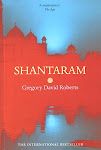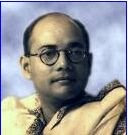The emerging innovation capital of Russia
AP Russia's President Dmitry Medvedev speaks at a technological modernisation meeting at Skolkovo innovation centre outside Moscow. File photo
Tomsk in Siberia is all set to spearhead the country's technological revolution.
Tomsk, an ancient Russian city tucked away amid endless Siberian forests and swamps, would seem an unlikely place to spearhead Russia's technological revolution. Yet, it is from here that science and technology is staging an impressive comeback. In the coming years, Tomsk, known for its hydrocarbons and iron ore resources, may emerge as the innovation capital of Russia.
Russian leaders have announced the goal of transforming the resource-dependent economy into a knowledge-based economy. While today oil, gas and minerals account for 80 per cent of Russia's export earnings, by 2020 the share of innovative industry is set to grow from five per cent to 30 per cent. The government funnelled $25 billion into Research and Development in 2010 and plans to more than double the funding over the next 10 years. President Dmitry Medvedev, who made innovation a focus of his tenure, last year signed a plan to build a futuristic high-technology research hub on a thousand acres of wasteland in Skolkovo outside Moscow. Even as the construction of the multi-billion Russian version of the Silicon Valley gathers momentum, a high-tech economy is up and going 3,000 km away in Tomsk.
Enormous potential
What makes Tomsk special is its enormous scientific potential. It is home to Siberia's oldest university, set up in 1888. Today, the city boasts of 25 academic and research institutes, six universities and 16 other schools of higher education. The city of 500,000 residents has nearly 100,000 students, drawn from all over Siberia and other Russian regions, as well as from 14 foreign countries.Russia has been traditionally strong in academic research but weak in applications, with the notable exception of defence technologies. After the breakup of the Soviet Union, the situation worsened as the economy nosedived in the course of a painful transition to free market. Over the past decade, the Russian economy has bounced back, growing 10-fold to a $2 trillion GDP. But it remains heavily reliant on commodities. However, the picture is beginning to change.
Tomsk was the first among Russian regions to adopt a strategy of innovative development. In recent years, the local government has built a ramified network of business incubators, venture funds and technology transfer centres to facilitate the commercialisation of a vast treasure trove of academic research. The high point of this effort was the establishment of a Special Economic Zone (SEZ) that offers considerable tax breaks, exemption from customs duties and other benefits to companies specialising in nanotechnologies, IT, electronics, biotechnology and medicine. A nuclear cluster will be added to the Tomsk SEZ next year, when the previously secret military nuclear facility, Seversk, will be converted into a civilian research centre. The Tomsk tech-town is still in its early stages but its 57 tenants have already come up with some amazing world class innovative products.
Elecard, a top world manufacturer of video codecs, whose customers include Microsoft and Sony, has developed, jointly with another Tomsk company, Triaxes — a technology to convert 2D films into 3D format and to shoot glasses-free 3D content with stereoscopic cameras used today for filming movies which are seen with glasses on.The Tomsk-based firm, Mikran, has teamed up with Nokia Siemens to produce LTE base stations for Russia's first 4G network. The company supplies electronic equipment to Indian telecom and defence sectors, and manufactures critical transmit/receive modules for phased array radars deployed on Russia's latest MiG-35 fighter planes.
A new gearing technology developed by the CJSC “Technology Market” allows for the construction of smaller size gearboxes with higher load capacity, longer life and greater efficiency than any existing gearings.Some high-tech products of the Tomsk SEZ have special relevance for India. A revolutionary nano-filter, AquaVallis, purifies 100 per cent biologically polluted water and does not require any further disinfection. It features higher flow rate, longer cartridge life and lower cost per unit of filtered water, and is ideal for countries like India. The filter was displayed at a Russian national exhibition in New Delhi in 2008 but no Indian firm showed any interest in the product.A wound nano-dressing developed by Tomsk scientists not only heals all kinds of burns and inflammations much faster than traditional bandages but is also effective in fighting hospital infection and drug-resistant bacteria — the curse of modern medicine.
A replica
Tomsk offers a glimpse of what Russia may look like in 10 or 20 years. Its economy, traditionally shaped by hydrocarbons, timber and defence industries, is a scaled replica of the Russian economy. The commodity sector still dominates but the region's 400 innovation driven enterprises contribute 20 per cent to the gross regional product. Tomsk plans to double the share in the next few years.A number of foreign companies have set up shop in Tomsk to tap its rich natural and intellectual resources. India is represented by ONGC Videsh Ltd which in 2009 acquired Imperial Energy, an oil company that has production assets in the Tomsk region. However, daunted by harsh climate and challenging terrain conditions, the company has considered pulling out. Tomsk Governor Viktor Kress, a strong advocate of closer business ties with India, tried hard to make OVL stay.
“I am aware that the OVL has opened talks with [Russian oil company] Bashneft for selling the Imperial Energy, but we would like them to carry on. I'm sure they will overcome their problems and expand operations in our region; we can offer them more oil blocks,” Mr. Kress told The Hindu during a recent press tour of Tomsk by Moscow-based foreign media. He expressed the hope that more Indian companies would come to Tomsk.“We would like to cooperate with India in not only hydrocarbons. We invite Indian businessmen to join our SEZ. We have developed a range of technologies that Indian companies may find very useful.”
Foreign business is indeed discovering the taste of the new Tomsk economy. Japanese, Singaporean, Taiwanese, Australian and European companies have settled in the SEZ but Indian companies are conspicuously absent from the region's high tech sector. Tomsk's trade with India stands at just over $1 million, which is 0.1 per cent of the region's foreign commerce.
India's low visibility in Tomsk is in stark contrast with the high-profile presence of China focussed on the rich pool of local talent. There are about 1,500 Chinese students enrolled at Tomsk universities, mostly in engineering faculties. The Confucius Institute has been operating at the Tomsk State University since 2008, offering Chinese language training to Russian students and running several language classes for schoolchildren. A number of leading Chinese universities have cooperation agreements with Tomsk universities that provide for regular exchange programmes and joint research. The prestigious Tomsk Polytechnic University has been invited to open a branch in the Liaoning Province of northeastern China. Tomsk has similar partnership arrangements with the Japanese, German, French, Australian and other foreign universities. Again, there are no Indian varsities among Tomsk partners. Some time ago, Tomsk signed a cooperation memorandum with Mumbai, but it is still too early to say whether it will make any difference.
Local India fans make their best to compensate for the lack of interest on the part of Indian government and business. There are half-a-dozen Indian dance groups which offer classes in classical and Bollywood styles to enthusiasts, give concerts and make the Indian presence felt at various cultural events. Moreover, Tomsk dancers have extended their reach far beyond their region to cater to the growing interest of Russians in India and its culture. One of the best known groups, Satvika, has set up a “Bharatanatyam school in Siberia” offering week-long intensive courses to groups and individuals prepared to travel hundreds of kilometres to Tomsk to get initiated in the ancient art of Indian dance.
Right time for India
It is rather unfortunate that Russian cities like Tomsk are low on India's radar screen. This probably betrays a widespread but outdated view of Russia as being little more than a source of energy and commodities for India's booming economy. It was a misconception 10 years ago, and is even more so today. In the 1990s, Indian business missed a chance to gain a foothold in the Russian up-and-coming manufacturing industries such as automobile, food and tobacco. Today, it has an opportunity to catch up by joining Russia's innovation push. Now is the right time to enter the burgeoning market of Russian high-tech. On the one hand, the Russian government is pouring money into cutting edge technologies while, on the other, Russian business is yet to develop an appetite for innovation, with just 10 per cent of companies investing in innovation.“We are inviting Indian business to come and set up joint R&D centres with Tomsk companies in IT, nanotechnologies, biotechnologies and other priority areas for both our countries,” says Governor Kress.
http://www.thehindu.com/opinion/lead/article2546622.ece
Read More...












